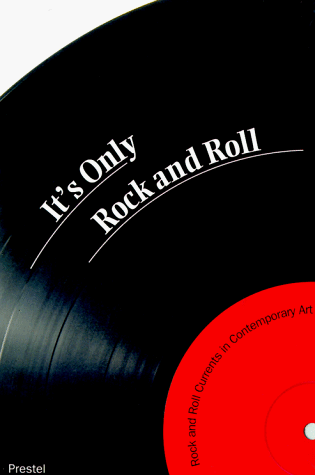Art & Design S.
1 total work
This documentation traces the imagery in contemporary art that has been inspired by rock and roll from its beginnings in the 1950s right up to 1995. The author explains that it was Cleveland disc jockey Alan Freed who first coined the phrase "rock and roll", at a time when contemporary art was poles apart from the masses. Art critics considered the Abstract Expressionist artists, such as Jackson Pollock and Willem de Kooning, to be beyond everyday human experience. With the teenagers of a new generation accounting for more than half of all record sales, rock and roll was soon set to influence emergent young artists. In the late fifties Ray Johnson, Andy Warhol and Richard Hamilton were the first to incorporate rock images and influences in their work. The book comprises a series of contributions, each of which examines different aspects of the influences in a chronological sequence. Often different artists were influenced by different aspects of rock and roll - Warhol, Grooms, Cleveland and Koons for instance were influenced by stardom. Other artists used rock personalities' names for titles of abstract compositions to impose the complexities of the celebrity on their work.
The influence of rock music was not just confined to the recording artists themselves; several works predominantly abstract have been named after song titles. Vinyl records even appear as a component part in some works. The text is not confined to reviewing the works of well-known contemporary artists. It includes a cross-section of the many lesser known names influenced by the rock and roll culture. The media employed by these artists and reviewed in the book range from conventional painting through collage, screen printing, photography, and sculpture to mixed media and many kinds of installation. This infiltration throughout the infrastructure of contemporary art has ensured rock and roll's longevity as a defining influence. All 166 works illustrated are fully captioned and their inspiration, relevance and interpretation are discussed in depth. Debbie Harry is the writer of the epigraph.
The influence of rock music was not just confined to the recording artists themselves; several works predominantly abstract have been named after song titles. Vinyl records even appear as a component part in some works. The text is not confined to reviewing the works of well-known contemporary artists. It includes a cross-section of the many lesser known names influenced by the rock and roll culture. The media employed by these artists and reviewed in the book range from conventional painting through collage, screen printing, photography, and sculpture to mixed media and many kinds of installation. This infiltration throughout the infrastructure of contemporary art has ensured rock and roll's longevity as a defining influence. All 166 works illustrated are fully captioned and their inspiration, relevance and interpretation are discussed in depth. Debbie Harry is the writer of the epigraph.
